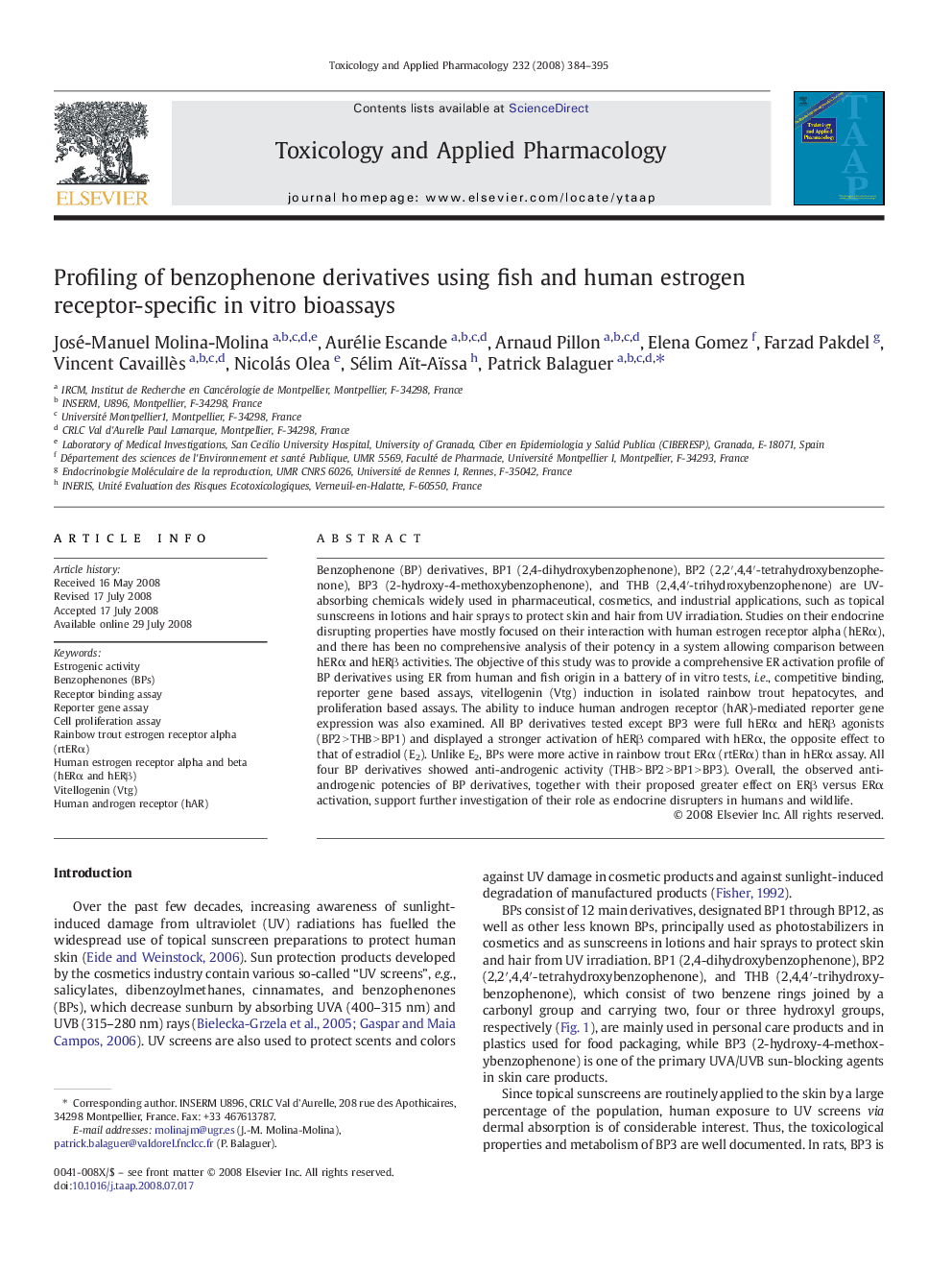| Article ID | Journal | Published Year | Pages | File Type |
|---|---|---|---|---|
| 2571045 | Toxicology and Applied Pharmacology | 2008 | 12 Pages |
Benzophenone (BP) derivatives, BP1 (2,4-dihydroxybenzophenone), BP2 (2,2′,4,4′-tetrahydroxybenzophenone), BP3 (2-hydroxy-4-methoxybenzophenone), and THB (2,4,4′-trihydroxybenzophenone) are UV-absorbing chemicals widely used in pharmaceutical, cosmetics, and industrial applications, such as topical sunscreens in lotions and hair sprays to protect skin and hair from UV irradiation. Studies on their endocrine disrupting properties have mostly focused on their interaction with human estrogen receptor alpha (hERα), and there has been no comprehensive analysis of their potency in a system allowing comparison between hERα and hERβ activities. The objective of this study was to provide a comprehensive ER activation profile of BP derivatives using ER from human and fish origin in a battery of in vitro tests, i.e., competitive binding, reporter gene based assays, vitellogenin (Vtg) induction in isolated rainbow trout hepatocytes, and proliferation based assays. The ability to induce human androgen receptor (hAR)-mediated reporter gene expression was also examined. All BP derivatives tested except BP3 were full hERα and hERβ agonists (BP2 > THB > BP1) and displayed a stronger activation of hERβ compared with hERα, the opposite effect to that of estradiol (E2). Unlike E2, BPs were more active in rainbow trout ERα (rtERα) than in hERα assay. All four BP derivatives showed anti-androgenic activity (THB > BP2 > BP1 > BP3). Overall, the observed anti-androgenic potencies of BP derivatives, together with their proposed greater effect on ERβ versus ERα activation, support further investigation of their role as endocrine disrupters in humans and wildlife.
